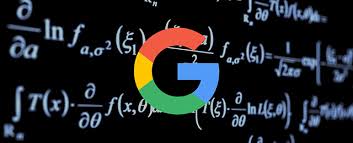Data Analytics is the science of examining raw data with the purpose of drawing conclusions. Data Analytics is the discovery, interpretation, and communication of meaningful patterns in data and applying those patterns in order to draw conclusions and make effective decisions.
Data Analytics focuses on inference, the process of deriving a conclusion based solely on what is already known by the researcher. Data Analytics involves many processes that include extracting, categorizing, and analyzing the various patterns, connections, and relationships within various data sets.
Data Analytics is used in many industries to allow companies and organizations to make better business decisions and in the sciences to verify or disprove existing models or theories.
Quantitative and Qualitative Analysis
Qualitative Analysis involves the analysis of numerical data with quantifiable variables that can be compared or measured statistically.
Qualitative Analysis is more interpretive, it focuses on understanding the content of non-numerical data (i.e. text, images, audio, video, including common phrases, themes, and points-of-view).
The Four Types of Analytics: Descriptive, Diagnostic, Predictive, & Prescriptive Analytics
These interrelated solutions help companies make the most out of their big data, each of these analytic types offers its own insight.
1. Descriptive Analytics
Descriptive Analytics provides information about what happened.
Descriptive analytics is a preliminary stage of data processing that creates a summary of historical data to yield useful information and possibly prepare the data for further analysis.
Descriptive Analytics, the conventional form of Business Intelligence and data analysis, seeks to provide a depiction or “summary view” of facts and figures in an understandable format, to either inform or prepare data for further analysis. It uses two primary techniques, namely data aggregation, and data mining to report past events. It presents past data in an easily digestible format for the benefit of a wide business audience.
A common example of Descriptive Analytics are company reports that simply provide a historical review of an organization’s operations, sales, financials, customers, and stakeholders. It is relevant to note that in the Big Data world, the “simple nuggets of information” provided by Descriptive Analytics become prepared inputs for more advanced Predictive or Prescriptive Analytics that deliver real-time insights for business decision making.
Descriptive Analytics helps to describe and present data in a format which can be easily understood by a wide variety of business readers. Descriptive Analytics rarely attempts to investigate or establish cause and effect relationships. This form of analytics doesn’t usually probe beyond surface analysis, the validity of results is more easily implemented. Some common methods employed in Descriptive Analytics are observations, case studies, and surveys. Thus, collection and interpretation of a large amount of data may be involved in this type of analytics.
2. Diagnostic Analytics
Diagnostic Analytics answers the question of why something happened.
Diagnostic Analytics examines historical data from different periods of time. This type of data analytics enables us to identify patterns, trends and correlations to help uncover the root cause behind a problem. This can be done using data mining techniques like Regression Analysis, Anomaly Detection, Clustering Analysis and Detection Analysis.
Typical examples include IT departments that use Diagnostic Analytics for troubleshooting, as well as customer service centres that use Diagnostic Analytics to find the root cause behind certain customer behaviours.
3. Predictive Analytics
Predictive Analytics answers the question of what is likely to happen.
Predictive Analytics is the branch of the advanced analytics which is used to make predictions about unknown future events. Predictive Analytics uses many techniques from data mining, statistics, modeling, machine learning, and artificial intelligence to analyze current data in order to make predictions about the future.
This is when historical data is combined with rules, algorithms, and occasionally external data to determine the probable future outcome of an event or the likelihood of a situation occurring.
4. Prescriptive Analytics
Prescriptive Analytics not only anticipates what will happen and when it will happen, but also why it will happen.
The final phase is Prescriptive Analytics which goes beyond predicting future outcomes by also suggesting actions to benefit from the predictions and showing the implications of each decision option.
Furthermore, Prescriptive Analytics suggests decision options on how to take advantage of a future opportunity or mitigate a future risk and shows the implication of each decision option. Prescriptive Analytics can continually take in new data to re-predict and re-prescribe, thus automatically improving prediction accuracy and prescribing better decision options.
Prescriptive Analytics ingests hybrid data, a combination of structured (numbers, categories) and unstructured data (videos, images, sounds, texts), and business rules to predict what lies ahead and to prescribe how to take advantage of this predicted future without compromising other priorities.
Prescriptive Analytics is the area of business analytics is dedicated to finding the best course of action for a given situation. Prescriptive Analytics is therefore interrelated to both Descriptive and Predictive analytics.
Business Analytics
When Data Analytics applies to business, it’s often referred to as Business Analytics.
Business Analytics refers to the set of quantitative and qualitative techniques and processes used to enhance productivity and business gain.
Business Analytics initiatives can help businesses increase revenues, improve operational efficiency, optimize marketing campaigns and customer service efforts, respond more quickly to emerging market trends, gain a competitive edge, and boost overall business performance.
Organizations apply analytics to business data to describe, predict, and improve business performance.
Data Analytics Supports a Wide Variety of Business Uses
Data Analytics also helps with enterprise decision management, cognitive analytics, Big Data Analytics, retail analytics, supply chain analytics, store assortment and stock-keeping unit optimization, marketing optimization and marketing mix modeling, web analytics, call analytics, speech analytics, sales force sizing and optimization, price and promotion modeling, predictive science, credit risk analysis, and fraud analytics.
– Banks and credit card companies analyze withdrawal and spending patterns to prevent fraud and identity theft.
– E-commerce companies and marketing services providers do click stream analysis to identify website visitors who are more likely to buy a particular product or service based on navigation and page-viewing patterns.
– Mobile network operators examine customer data to forecast churn so they can take steps to prevent defections to business rivals; to boost customer relationship management efforts, they and other companies also engage in CRM analytics to segment customers for marketing campaigns and equip call center workers with up-to-date information about callers.
– Healthcare organizations mine patient data to evaluate the effectiveness of treatments for cancer and other diseases.
Inside the Data Analytics Process
Data analytics applications involve more than just analyzing data. Particularly on advanced analytics projects, much of the required work takes place upfront, in collecting, integrating and preparing data and then developing, testing and revising analytical models to ensure that they produce accurate results.
In addition to data scientists and other data analysts, analytics teams often include data engineers, whose job is to help get data sets ready for analysis.
The analytics process starts with data collection, in which data scientists identify the information they need for a particular analytics application and then work on their own or with data engineers and IT staffers to assemble it for use.
Data from different source systems may need to be combined via data integration routines, transformed into a common format and loaded into an analytics system, such as a Hadoop cluster, NoSQL database or data warehouse. In other cases, the collection process may consist of pulling a relevant subset out of a stream of raw data that flows into, say, Hadoop and moving it to a separate partition in the system so it can be analyzed without affecting the overall data set.
Machine Learning for Data Analysis
Since analytics can require extensive computation, the algorithms, and software used for analytics harness the most current methods in computer science, statistics, mathematics, specialized systems, and software.
Machine Learning deals with the construction and study of systems that can learn from data rather than follow programmed instructions. Machine Learning builds heavily on statistics that assist in the automation of analytical model building.
Pattern Recognition
Pattern recognition is a branch of Machine Learning that emphasizes the recognition and classification of data patterns or clusters of patterns.
Pattern recognition is the ability to detect arrangements of characteristics of data that yield information about a given system or data set. Pattern recognition is the process of recognizing patterns by using a Machine Learning Algorithm.
Pattern recognition is closely related to Artificial Intelligence and Machine Learning, together with applications such as data mining and knowledge discovery in databases (KDD). Predictive analytics in data science work can make use of pattern recognition algorithms to isolate statistically probable movements of time series data into the future.
In a technological context, a pattern might be recurring sequences of data over time that can be used to predict trends, particular configurations of features in images that identify objects, frequent combinations of words and phrases for natural language processing (NLP), or particular clusters of behavior.
Advanced Analytics
At a high level, data analytics methodologies include exploratory data analysis (EDA), which aims to find patterns and relationships in data, and confirmatory data analysis (CDA), which applies statistical techniques to determine whether hypotheses about a data set are true or false. EDA is often compared to detective work, while CDA is akin to the work of a judge or jury during a court trial.
There is increasing use of the term advanced analytics, typically used to describe the technical aspects of analytics, especially in the emerging fields such as the use of machine learning techniques like Neural Networks, Decision Tree, Logistic Regression, Multiple Linear Regression Analysis, and Classification Predictive Modeling. It also includes “unsupervised machine learning techniques like Cluster Analysis, Principal Component Analysis, Segmentation Analysis, and Association Analysis.
Molify is a Software Development Firm. With the use of Analysis, Algorithms, Software,
& Artificial Intelligence
Mollify Helps Companies Enhance Their Digital Business





